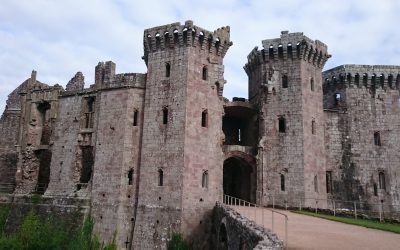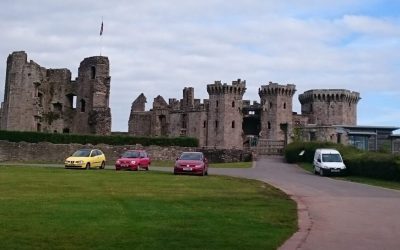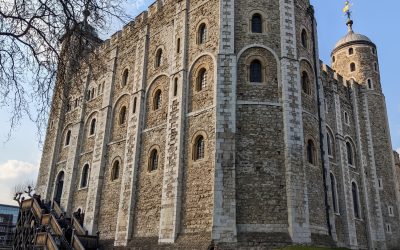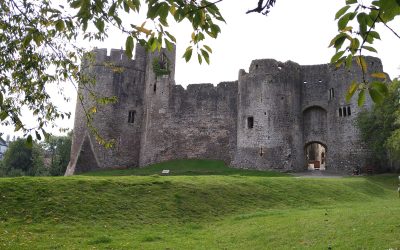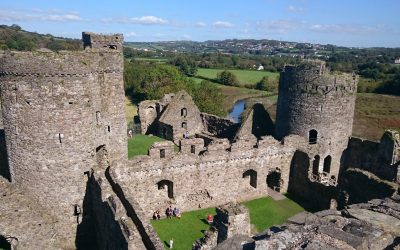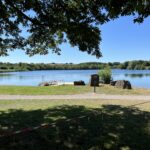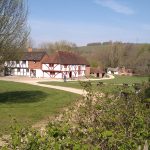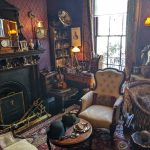A castle is a large, fortified building and was typically owned by nobility and royal families during the Middle Ages to protect themselves, their families, and their belongings from attacks by enemies; they also served as hubs for political and social activity. Castles took many years to construct and were expensive to build, so they were also seen as a symbol of wealth and power.
Who owned castles?
Most castles were owned and inhabited by kings or queens. In other cases, castles were owned by wealthy merchants or people from the growing middle class. Many castles that have survived today are owned by governments or groups that work to preserve history and are open to the public as museums or tourist attractions.
When and where was the first castle built?
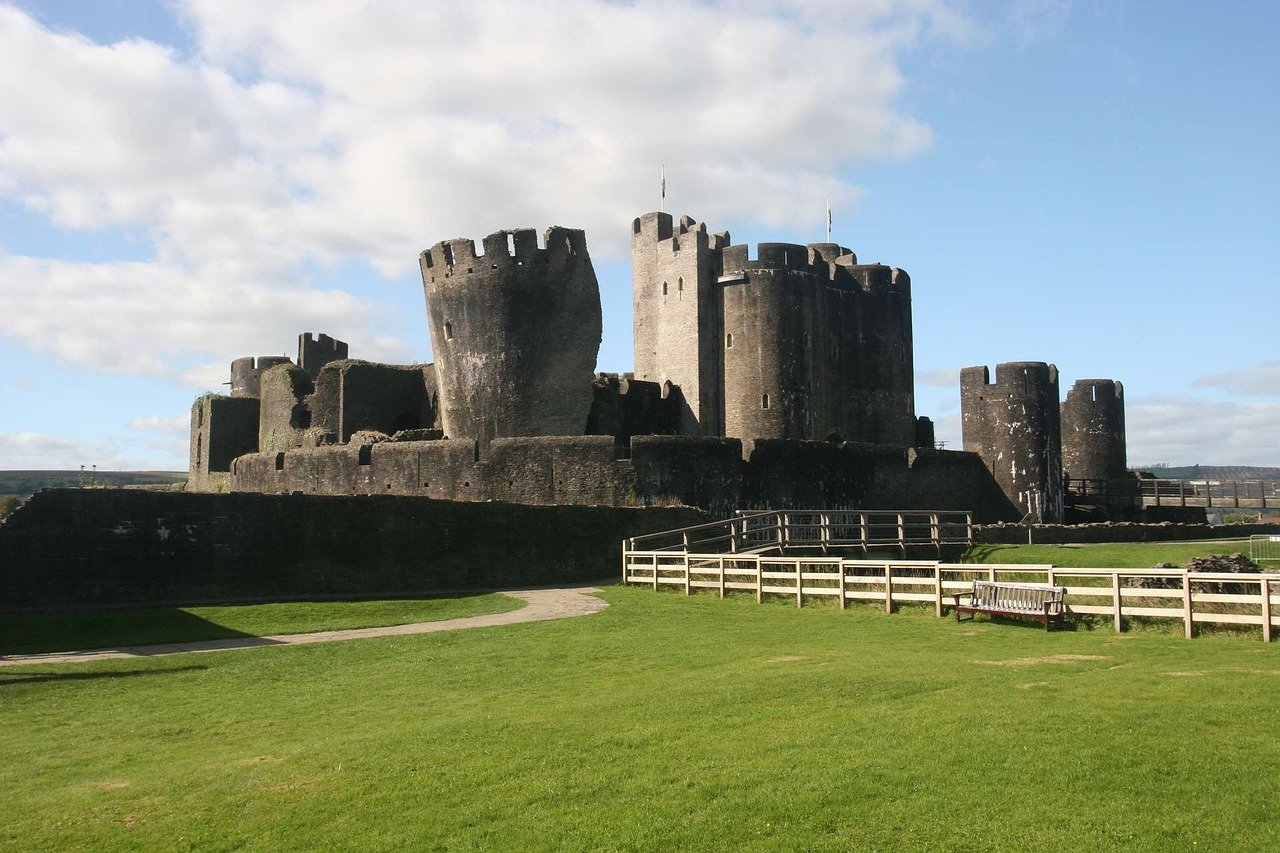
The first castles were constructed in Europe after the Norman Conquest of England in 1066 to consolidate power and protect the king. These Norman strongholds were typically constructed on top of a rocky outcropping, and they featured high walls, moats, and other defences.
The first Norman defences were motte-and-bailey castles, which had a wooden or stone keep on top of a man-made hill (the motte) and a courtyard (the bailey) around all four sides. This, in turn, was fortified by a palisade and ditch. Durham Castle is a fine example of an early motte and bailey castle.
The first fortresses were built in the Middle East in the 9th and 10th centuries. Both the Byzantines and the Muslims built fortresses as defensive strongholds to protect their own territories. While we may think that a castle and a fortress are the same thing, there are some differences between the two.
Castles were often used as fortresses, but they were also the homes and seats of power for feudal lords and kings. Fortresses, on the other hand, were only used for military purposes and were usually built to protect against enemy attacks. Fortresses were often smaller than castles, and they were usually less ornate and luxurious than castles. This is because they were built to be practical and useful, not as a place to live.
Castle locations
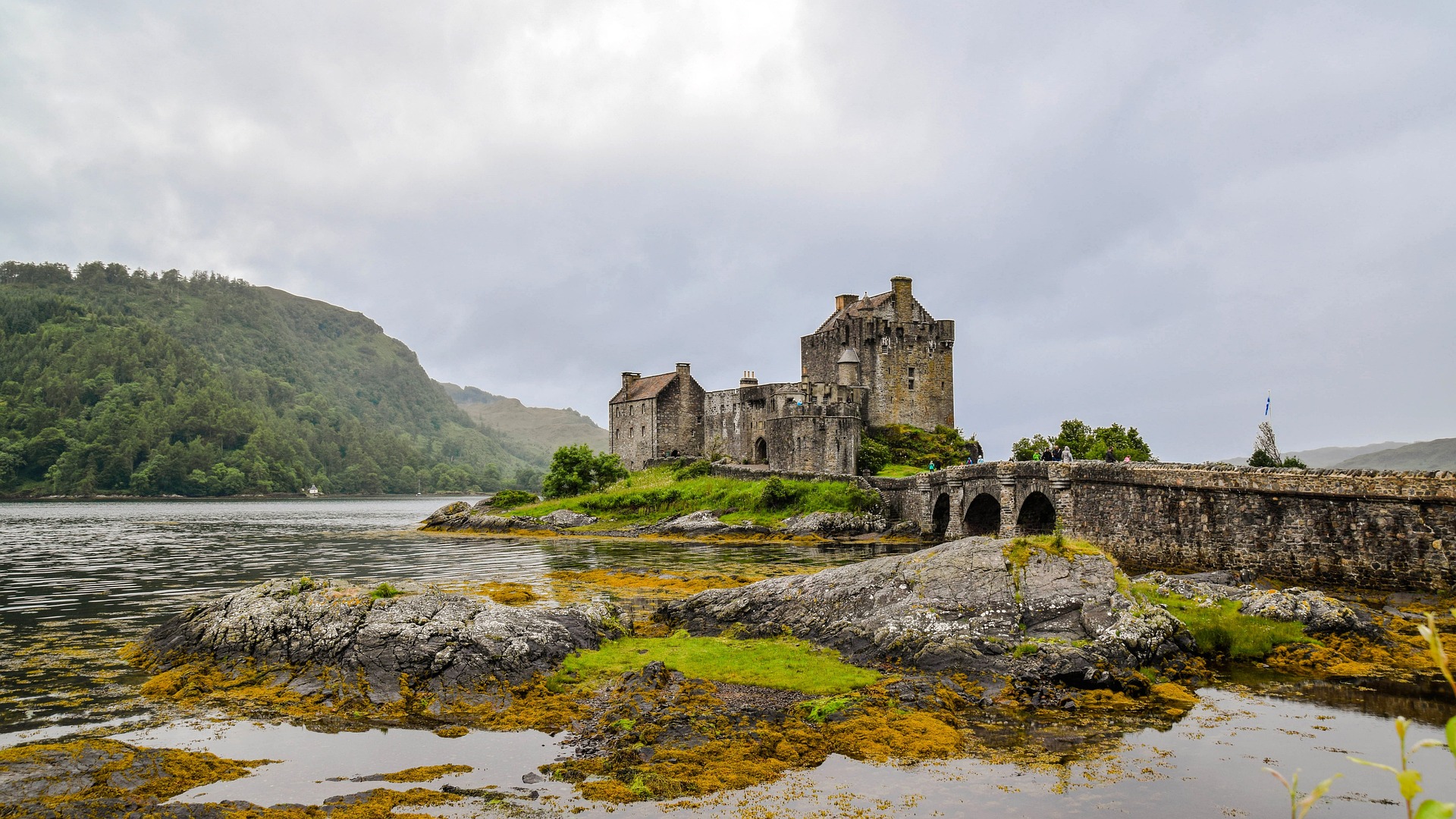
Castles were frequently built on top of mediaeval or Roman ruins or pre-existing fortifications known as hillforts, but regardless of their origins, they were always situated in strategic locations, such as by rivers or on top of hills with moats surrounding them.
These locations provided a tactical advantage for defence, but they were also chosen for practical purposes. Having a castle near a river, for example, allowed supplies to be brought in and water to be available for the castle. Some castles were built near trade routes and populated areas to allow the rulers of the area to control trade while also protecting and controlling the people who lived there.
Other types of castles
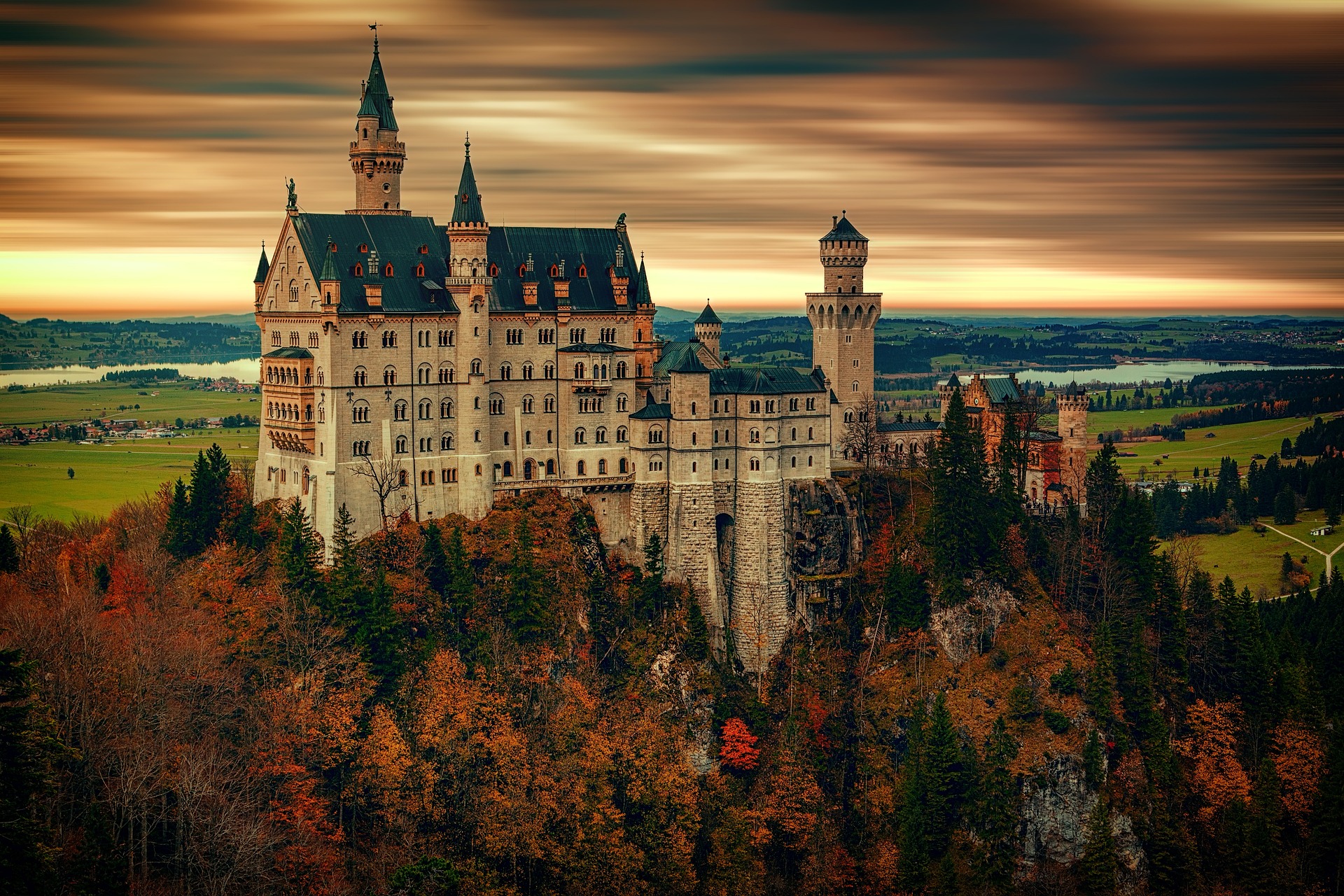
There are several different types of castles, including:
Motte and bailey castles: These were the earliest castles, and they were built in the 11th and 12th centuries. They consisted of a tower made of wood or stone known as the motte and a walled courtyard known as the bailey.
There are a few motte-and-bailey castles that were built entirely out of stone and have survived to the present day; the Tower of London and Windsor Castle are two of the best known examples. Windsor Castle features two baileys. Durham Castle was built in the traditional motte and bailey style and is a stunning example of a mediaeval fortress.
Windsor castle and Warwick Castle are Motte and bailey design castles.
Concentric castles: were built in the 13th and 14th centuries, when gunpowder and other new weapons were becoming more common. They had two or more sets of walls, with each wall built inside the next. This made the castle harder to attack because it had more than one line of defence.
Kidwelly Castle, and Caerphilly Castle are two great examples of concentric castles.
Fortress castles: These castles were built in the 15th and 16th centuries, and were built primarily for military purposes.
Fortress castles were constructed to withstand attacks from enemies and were typically situated in prominent locations, such as atop a hill or at the city’s main gate. Many of these structures featured towers, barbicans, and moats in addition to their thick, high walls.
It was not uncommon for the living quarters inside a fortress castle to be small and functional, with few luxuries for the occupants. Building a strong defence system was a higher priority.
Conwy Castle is a fine example of fortress castle.
Palaces: Palaces were built in the 16th and 17th centuries and were fit for a king, queen, or other member of the highest nobility. Palaces are typically grand in scale, with extravagant furnishings and elaborate design throughout. They usually house the monarch or other ruling families and are used for state ceremonies and other important events.
Palaces can be found in both urban and rural areas and are surrounded by elaborate gardens, parks, or other landscaped grounds. They were only ever meant for aesthetic purposes, rendering them completely defenceless.
The French Palace at Versailles, the British Buckingham Palace, and the Chinese Forbidden City are just a few examples of well-known palaces around the world.
Romantic castles: The term “romantic castle” is used to describe a specific style of European castle that was popular in the 19th century and was modelled after their mediaeval forebears. They were often built in picturesque locations, such as on a hilltop overlooking a river or lake.
Romantic castles frequently took on a Gothic Revival or Neogothic design, complete with turrets, battlements, and other architectural flourishes reminiscent of mediaeval fortifications. However, they weren’t built with the intention of protecting the inhabitants from outside threats; rather, they were grand residences for the affluent.
The German Neuschwanstein Castle and the French Château de Chambord are two examples of well-known romantic castles.
For more information on types of castles see our What are the 4 Different Types of Castles?
More Castle Information
What are the 4 Different Types of Castles?
Throughout history, hundreds of castles have been built, and they can be seen today as a visual reminder of the past. There are four main types of castles that were built at varying times, and they are easily identifiable by their distinguishing features. We are going...
Castles Built by the Welsh
Due to the many times that Wales has been invaded throughout history, there are many castles there that have been built by outsiders. You can find Norman and Edwardian castles in Wales, which were built as a symbol of their power and control over the country and as a...
Welsh Castle Facts
Wales is a beautiful place that is home to many amazing castles that can teach you about the history of the country. Whether you are super knowledgeable about the castles that are in Wales, or you have yet to learn anything at all, this is a great place to find out...
What are hillforts?
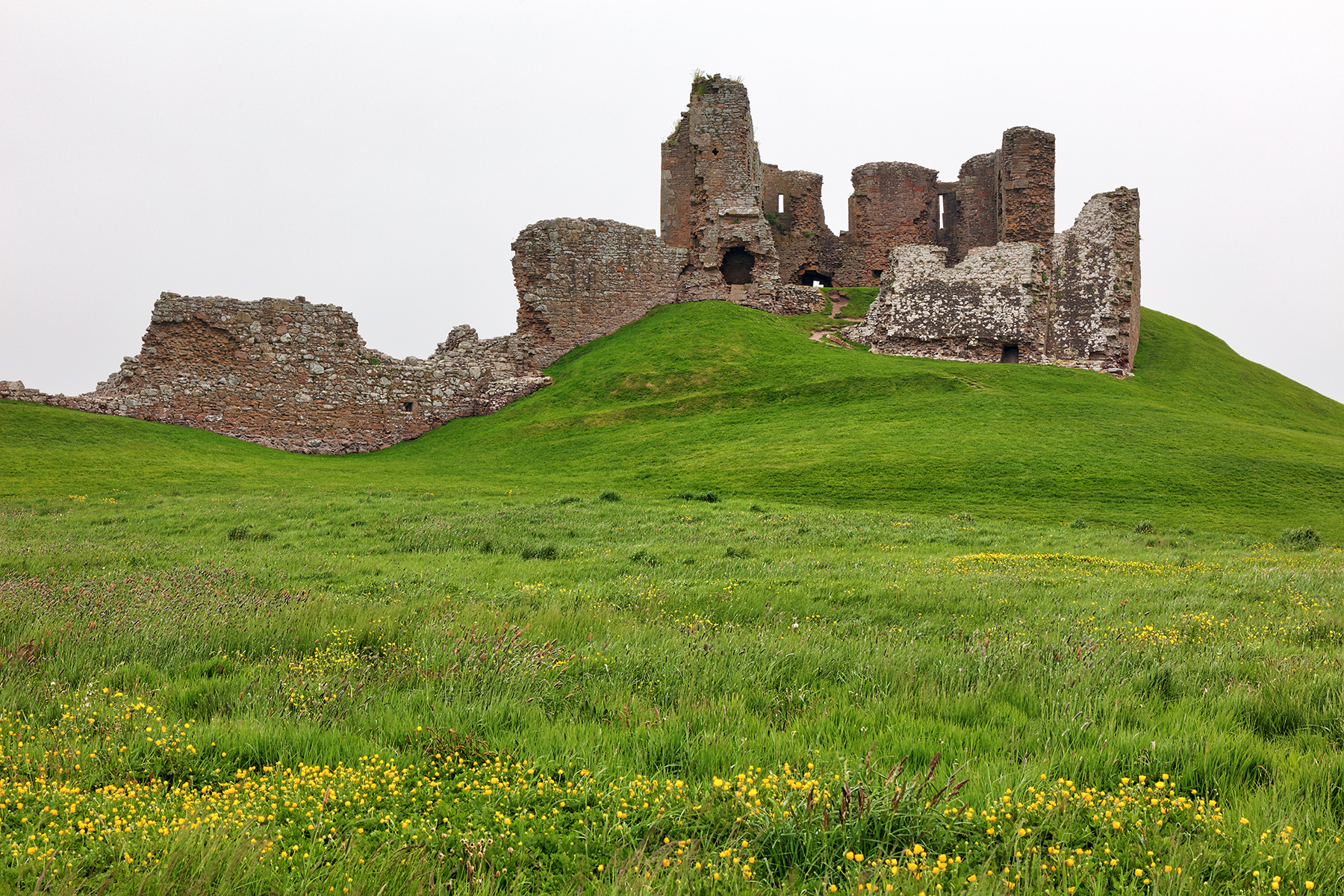
Hillforts are fortified settlements that were built on artificial mounds or other elevated ground. They were common in many parts of Europe, particularly in Britain and Ireland. Evidence suggests that fortifications began to be built as early as 900 BC, with the majority of early forts being built between 800 and 700 BC.
Hillforts were built to protect against enemy attacks and typically had a wall around them as well as a ditch or moat around the outside. Inside the walled area, there were often houses, storage buildings, and other structures. Some hillforts also had additional defensive features such as gates, towers, or palisades.
Dover Castle in Kent was built on an Iron Age hill fort; today it also features a Roman lighthouse and an Anglo-Saxon church that was likely built as part of a Saxon fortified settlement. After William the Conqueror’s triumph at the Battle of Hastings in 1066, he built a Norman earthwork and a wooden-walled castle to protect the area. Tunnels were dug under Dover Castle in the late 18th century; these tunnels served as the command centre from which the Dunkirk evacuation was orchestrated during World War II.
Roman forts were strongholds constructed by the Roman military. They were built at important spots, like where major trade routes met, and were used to protect the Roman Empire. Traditional Roman forts were square or rectangular in plan, with high walls and massive gates. Barracks for the soldiers, warehouses, and other structures could all be found within the fortifications. Roman forts were usually made of stone, brick, or other strong materials and were made to withstand attacks. Two famous examples of Roman fortifications are Hadrian’s Wall in England and the Limes Germanicus in Germany.
What defences do castles have?
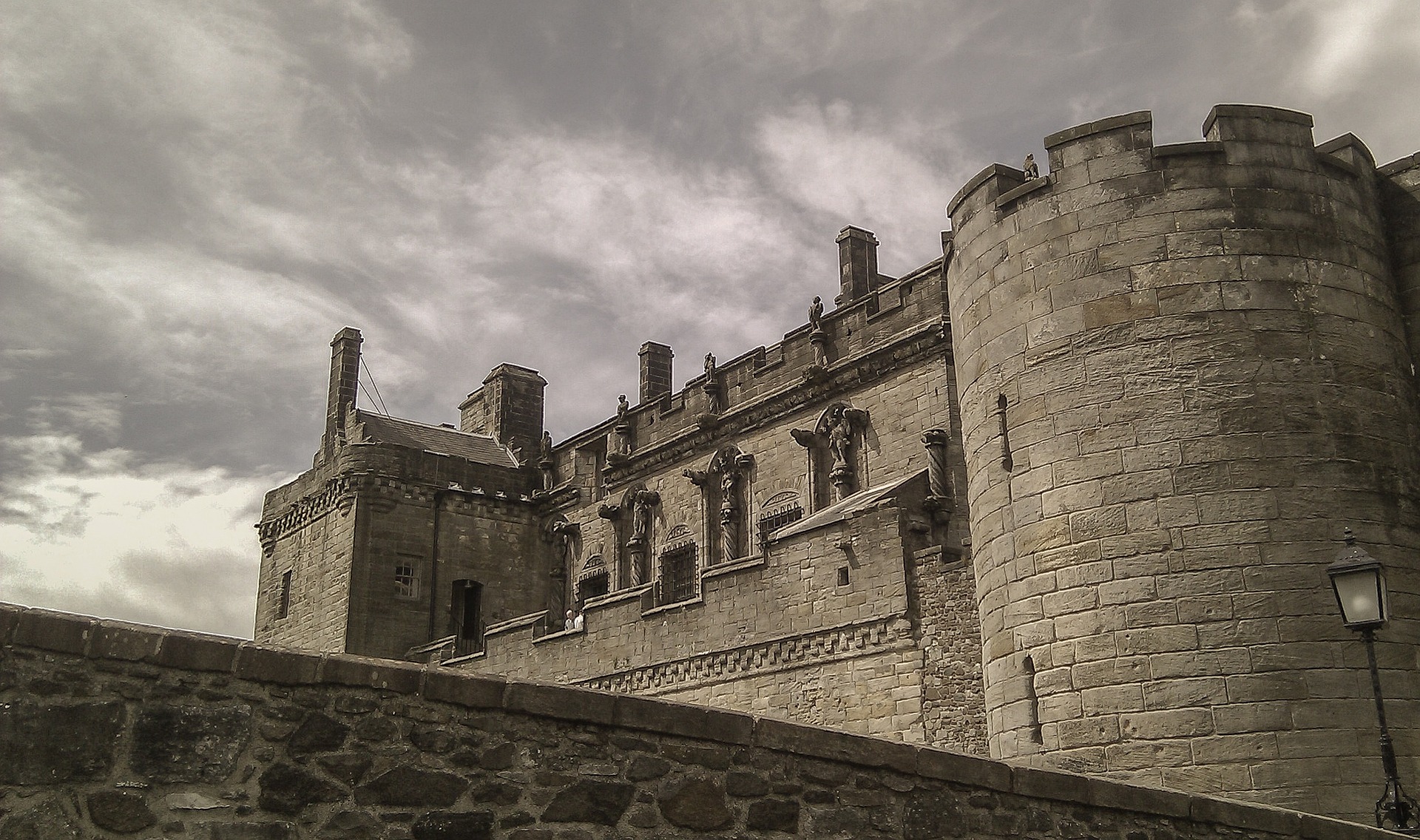
Castles have many defensive features, including thick walls, moats, battlements, and towers. The walls of a castle were typically made of stone or other strong materials, and they were often reinforced with towers and battlements.
Thick stone walls: castles were built with thick stone walls to protect the inhabitants from enemy attacks. The thickness of the walls was determined by a number of things, such as the style of architecture and the building materials; some walls were as much as 20 feet thick. A palisade wall or arrow slits were often added to these walls to make them even stronger.
Moats: Moats were deep, water-filled ditches that surrounded the castle. They made it hard for attackers to get close to the castle walls or gain entry to the castle through the gates.
Battlements: were the higher parts of the castle walls where defenders could shoot arrows or other projectiles at attackers.
Towers: towers were tall, fortified structures within the castle walls. They provided additional defensive positions and a vantage point for the defenders.
Gates: Gates were the main ways in and out of the castle. They were usually heavily fortified and guarded to keep enemies out.
Drawbridge: Many castles had a drawbridge, which was a bridge that could be raised or lowered to allow access to the castle. When the drawbridge was raised, it formed an additional barrier to entry.
Portcullis: A portcullis was a heavy, iron-grate gate that could be lowered to block the entrance to the castle.
Arrow slits: Arrow slits were narrow openings in the castle walls through which defenders could shoot arrows at attackers.
Keep: A keep was a large, fortified tower at the centre of a castle. It gave the defenders one last place to hide in case the rest of the castle fell.
Weapons that would have been used
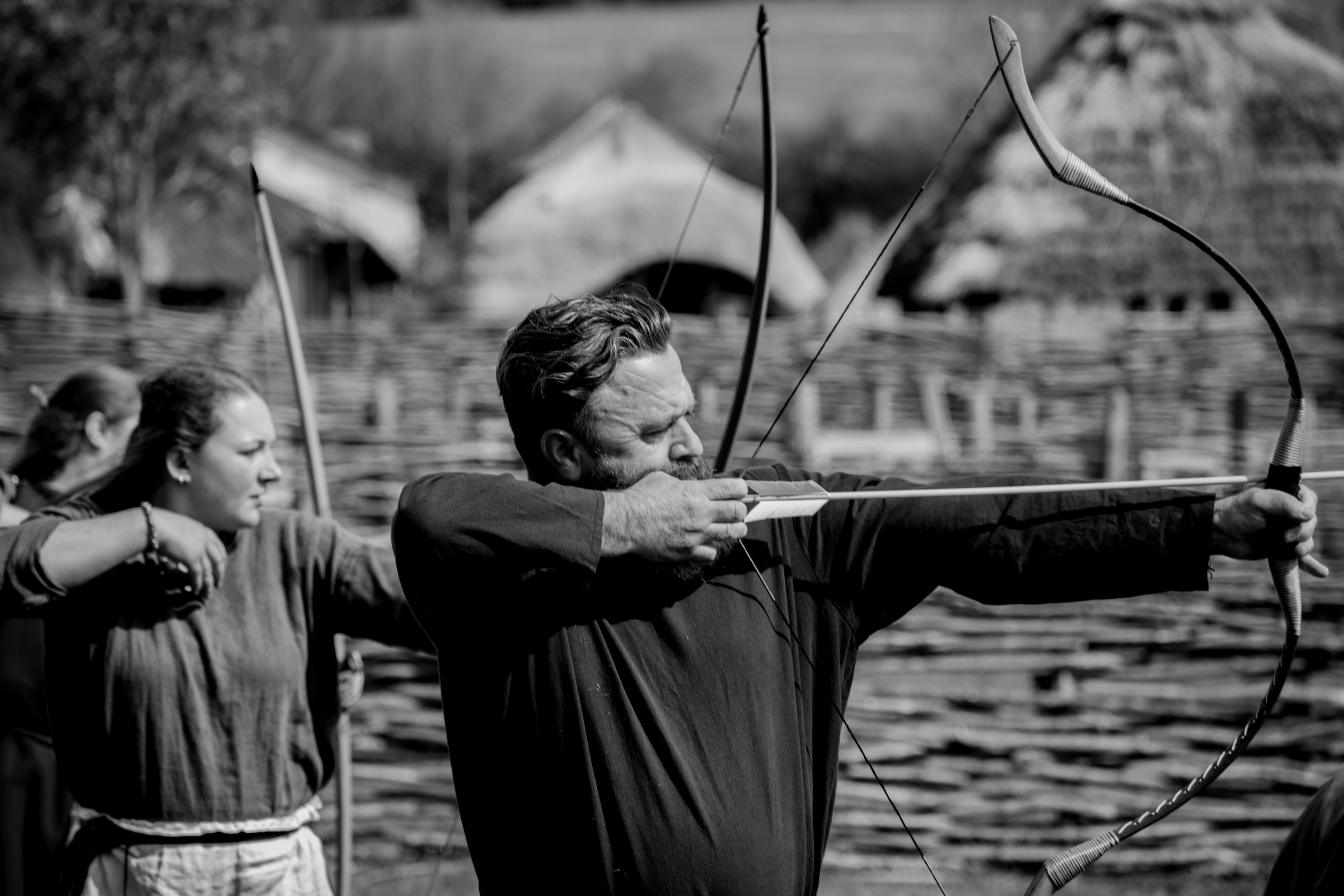
The defences of a castle could have been bolstered by a plethora of weapons. It was necessary to have weapons not only to defend the fortress from outsiders but also to launch raids on the lands surrounding the fortress. Some weapons that might be found in a castle include
Bows and arrows: bows and arrows were a common weapon used in castles, as they allowed defenders to shoot projectiles at attackers from a distance.
Crossbows: Crossbows were similar to bows and arrows, but they used a mechanical system to shoot projectiles. They were more powerful than bows and arrows, but they were also slower to reload.
Spears: Spears were long, pointed weapons that were used for thrusting and stabbing. They were effective in close combat, but they were not as effective at a distance.
Swords: Swords were long, bladed weapons that were used for cutting and slashing. They were effective in close combat, but they were not as effective at a distance.
Axes: Axes were heavy, bladed weapons that were used for chopping and cutting. They were effective in close combat, but they were not as effective at a distance.
Maces: Maces were heavy, blunt weapons that were used for crushing and bludgeoning. They were effective in close combat, but they were not as effective at a distance.
Catapults: Catapults were large, mechanical devices that were used to launch projectiles over the castle walls. They were effective at long range, but they were not as accurate as other weapons.
Trebuchets: Trebuchets were similar to catapults, but they used a counterweight system to launch projectiles. They were more accurate than catapults, but they were also slower to reload.
Ballistae: Ballistae were large, crossbow-like weapons that were used to shoot projectiles over long distances. They were effective at long range, but they were not as effective in close combat.
Boiling oil: Many castles had cauldrons of boiling oil that could be poured on attackers from the castle walls. This was an effective way to defend against enemy soldiers trying to scale the walls.
rooms in a castle

Castles were complex structures, and they were made up of many different parts. Here are some of the main components of a castle:
Keep: The keep was a large, fortified tower at the centre of the castle. It was the stronghold of the castle, and it provided a final refuge for the defenders in case the rest of the castle was breached.
Gatehouse: The gatehouse was the main entrance to the castle. It was heavily fortified, and soldiers usually stood guard to stop enemies from getting in.
Courtyard: The courtyard was the open space within the castle walls. It was where the castle’s buildings and other structures, like houses, stables, and storage buildings, were.
Great hall: The great hall was a large, central room in the castle where the lord and his family would eat, entertain guests, and conduct business. It was often the most ornate and impressive room in the castle.
Kitchen: The kitchen was where the food for the castle was prepared. It was typically located near the great hall, and it was equipped with a fireplace, ovens, and other cooking equipment.
Bedchambers: Bedchambers were the bedrooms in the castle where the lord and his family, as well as important guests, would sleep. Most of the time, they were near the great hall, and they were usually big and well-equipped.
Guardroom: The guardroom was where the soldiers who guarded the castle would sleep and rest. It was usually near the gatehouse and had beds, tables, and other pieces of furniture.
Chapel: The chapel was a small religious building where the residents of the castle could pray and worship. It was often near the great hall, and religious images and symbols were often used to decorate it.
Storerooms: storerooms were where the castle’s food, supplies, and other goods were kept. Most of the time, they were close to the kitchen and had shelves, barrels, and other storage containers.
Armoury: The armoury was where the castle’s weapons and armour were stored. It was typically located near the guardroom, and it would have been equipped with racks, chests, and other storage containers.
Castle dungeons
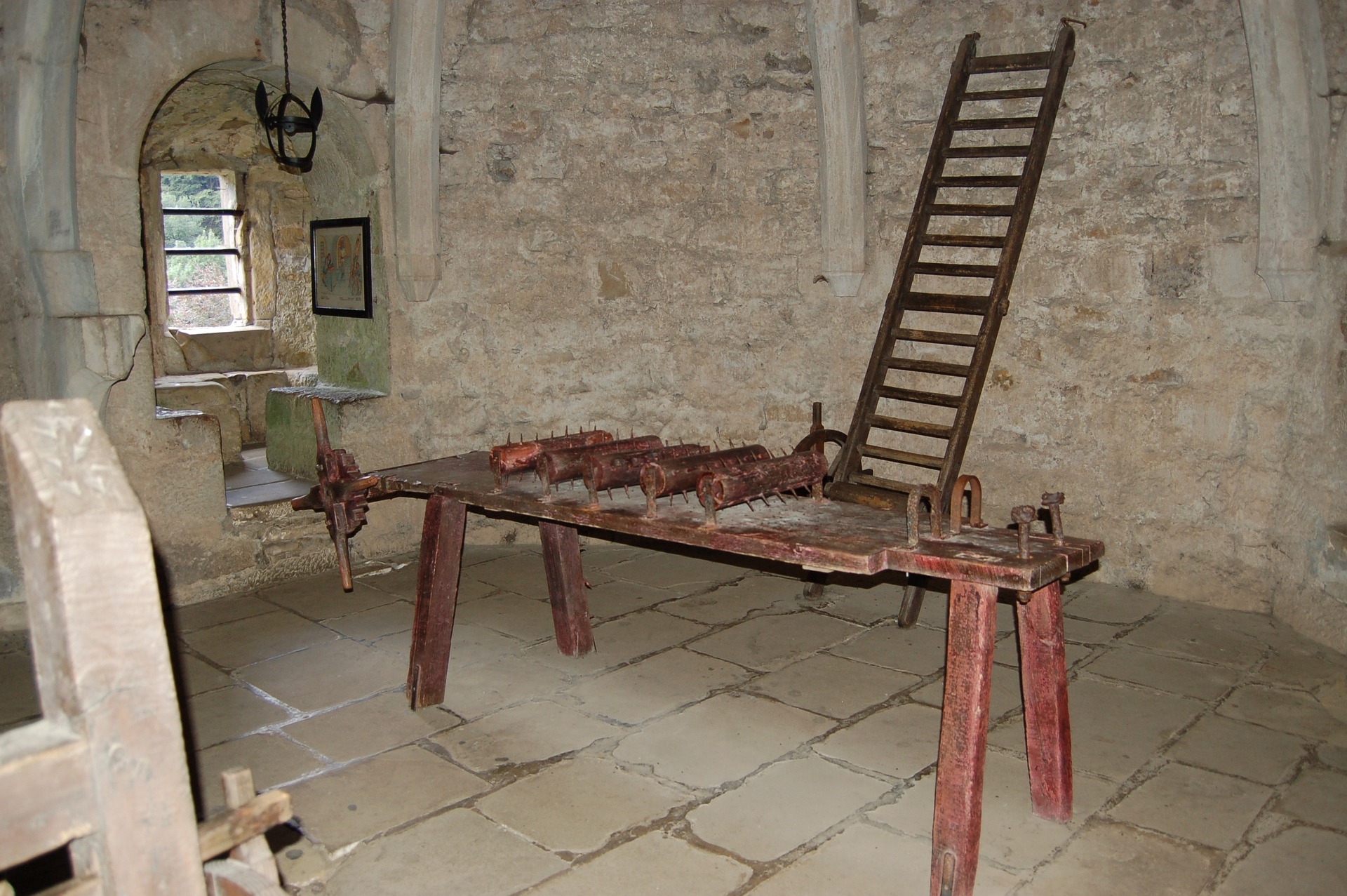
The castle dungeon was a dark, underground space in a castle where prisoners were held. It was usually deep inside the castle, and it was often used to punish or torture people. Dungeons were often damp, cold, and poorly ventilated, and they were not meant for long-term habitation. Most of the time, they had chains, shackles, and other restraints to hold prisoners in place. Some dungeons also had other torture tools, like racks or iron maidens, that were used to inflict pain on prisoners.
An oubliette is a type of dungeon that was often used as a place of punishment or torture. The word “oubliette” comes from the French term “oublier,” which means “to forget.” This refers to the fact that prisoners who were placed in an oubliette were often forgotten about, as they were hidden deep within the castle and were not meant to be seen or heard from again. Oubliettes were a cruel and inhumane way to punish people.
An oubliette is only accessible through a hatch or hole in a high ceiling. It was typically a small, dark, underground room with no light or ventilation. It was often equipped with shackles, chains, and other restraints to keep prisoners in place, and it was not meant for long-term habitation.
Pembroke Castle has an oubliette; the only way to get into it is through a hatch in the floor. John Whithorne was imprisoned there in 1440 by Humphrey, Duke of Gloucester, who wanted to seize Whithorne’s land on the Isle of Wight. Whithorne went blind and suffered incurable health issues in the dungeon due to a lack of food, clothes, and light.
Castle toilets
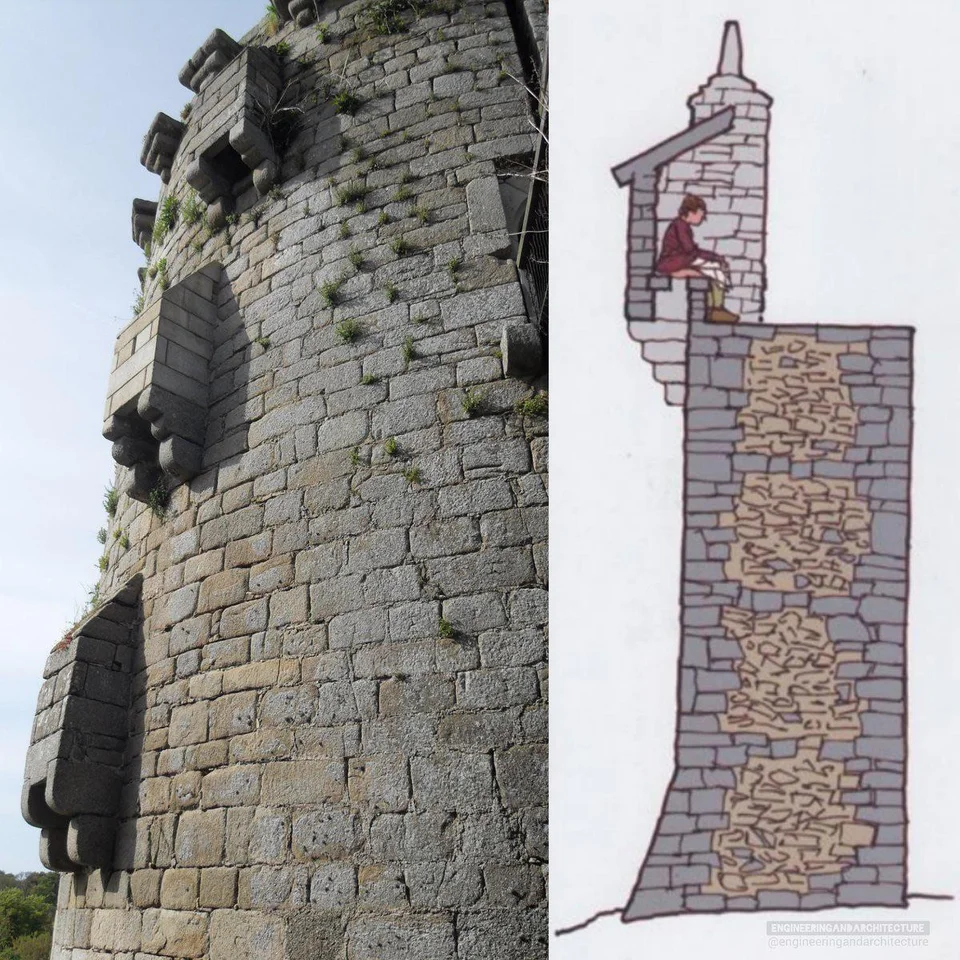
The castle toilet, also known as the privy, latrine, or garderobe, would typically be small rooms that protruded from the upper walls, with the waste draining into the moat below. The toilet was equipped with a seat or bench with holes in it.
Waste would fall through the holes into a pit or cesspool below. The toilet was typically not well-ventilated, and it could be a smelly and unpleasant place. In general, castle toilets were not very sanitary or comfortable, and they were a far cry from the modern conveniences that we enjoy today.
Some castles had toilets in buildings on the ground floor, which had stone drains to get rid of waste. At Chepstow Castle, the toilets in the large stone hall dumped their waste right into a river. Some other castles, like Corfe Castle and Peveril Castle, had latrine shafts that went into the courtyard, bailey, or even over the side of a cliff.
Chamber pots were a common type of toilet used in castles, especially in the bedrooms of the lord and his family. A chamber pot was a small, portable pot that was used for urinating or defecating. It was typically made of ceramic, and it had a handle for easy carrying.
Chamber pots were used at night and were emptied in the morning, either by pouring the waste into the privy or by throwing it out of a window. Chamber pots were a common feature of castle life, and they were a necessary part of everyday hygiene in the Middle Ages.
Living in a castle

Life in a castle was very different from life today. Castles were the homes and centres of power for the lords and nobles who lived in them, and they were the centres of courtly life and political activity. However, life in a castle was also very hierarchical, and there were strict rules and customs that governed the people who lived there.
Nobles and lords: The nobles and lords who lived in castles were the most powerful and wealthy members of society. They were the rulers of the castle, and they had many privileges and rights. They lived in the most luxurious and comfortable parts of the castle, and they were waited on by servants and other lower-status individuals. However, they were also expected to follow strict rules of etiquette and behaviour, and they were constantly involved in the politics and intrigue of courtly life.
Knights and soldiers: knights and soldiers were the defenders of the castle, and they were responsible for protecting it from enemy attacks. They lived in the castle, and they were trained in the arts of war and combat. They were typically well-respected members of society, and they enjoyed many privileges and rights. However, they were also expected to be ready to go to war at a moment’s notice, and their lives could be dangerous and violent.
Servants and peasants: The majority of the people who lived in and around the castle were servants and peasants. They were the lowest-status members of society, and they had few rights or privileges. They worked hard to serve the lords and nobles of the castle, and they lived in small, cramped quarters. They were often poorly paid and poorly treated, and their lives were hard and difficult, but they were also an important part of the castle community and were needed for the castle to run every day.
You may like
The Tower of London
The Tower of London is a secure fortress, royal palace, and infamous prison in the heart of London. Tickets to this attraction allow you to explore this iconic castle and world heritage site, so you can find out everything there is to know about its history. If you...
Chepstow Castle
If like me you love castles then Chepstow castle should most definitely be on your list of castles to visit. This castle has a deep history that is well worth exploring. In this article, we will cover every aspect of the castle from its founding to its ruin,...
Kidwelly Castle
If you are looking for a new castle to visit, then you might want to consider taking a look at Kidwelly Castle. This is a castle that is rich with history, and visiting what remains of this castle makes for an excellent day out. If you are thinking of going to this...


